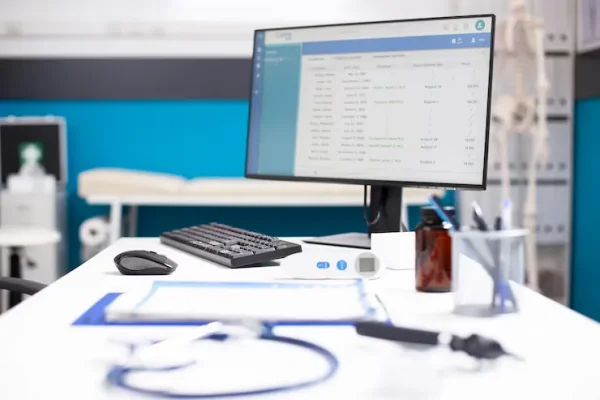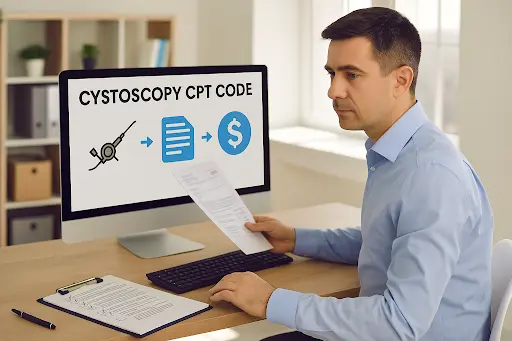Ever feel like your billing reports are telling you… almost nothing?
The totals are there. The percentages look fine. But something’s off, maybe collections are slower than expected, or your team is chasing denials more than usual.
And when you ask what’s going on, you get vague answers or a spreadsheet that somehow makes things murkier.
Here’s the thing most people won’t say out loud:
If you’re not asking about billing codes, you’re not getting the full picture.
You don’t need to become a coder. You don’t need to memorize modifiers.
But you do need to know what’s actually being billed (and why) if you want to lead with confidence, protect your revenue, and make sure your billing partner is doing more than just moving claims out the door.
At Cadence Collaborative, we’ve seen firsthand how code-level visibility can transform billing from a black box into a clear, strategic advantage.
This article is your shortcut to understanding how. Let’s make it make sense.
What Are Billing Codes, Exactly?
Every medical service, supply, and diagnosis is assigned a billing code, a standardized way of telling payers what was done, why it was done, and how much it’s worth.
The main players:
- CPT codes (Current Procedural Terminology): Describe services and procedures
- ICD codes (International Classification of Diseases): Explain the reason for care
- HCPCS codes (Healthcare Common Procedure Coding System): Cover supplies, medications, equipment, etc.
Think of them as the lingua franca between providers and payers. If they’re wrong, incomplete, or vague, claims get denied, underpaid, or worse, flagged for audit.
Why You Should Be Looking at Billing Codes
Billing codes might not seem like your job, and technically, they’re not. But they tell you way more than most reports ever will.
They show what your team is billing for, how services are being documented, where money is being lost, and whether your billing partner is doing things right.
If you care about revenue, compliance, or getting paid faster, you should care about the codes.
Here’s why they matter more than you think:
1. Billing Codes Reveal What You’re Actually Getting Paid For
When you review a medical bill or claim summary, you’re not just looking at totals, you’re seeing what your team is coding as billable work.
If services aren’t being accurately coded, you’re leaving money on the table.
Want to know what procedures your highest-revenue departments are performing most?
Want to track where claim denials are coming from?
Want to assess the ROI of adding a new clinical service line?
It all starts with reviewing the code.
2. Codes Help You Catch Errors Before the Payers Do
Most billing errors don’t come from fraud, they come from honest, human mistakes:
- The wrong modifier on a CPT code
- A diagnosis that doesn’t match the service
- A time-based code applied to a short consultation
- A missing code for a high-cost drug
If you’re not reviewing billing codes regularly, or at least asking your billing vendor to justify them, you won’t catch these errors until they trigger denials or payer audits.
And by then, it’s already costing you.
3. It’s the Easiest Way to Vet a Medical Billing Partner
Hiring a billing vendor? Ask to see a sample bill and a code audit.
If they can’t walk you through what’s being coded, why it’s being coded that way, and how it aligns with payer policy, that’s a red flag.
Great billing partners treat codes like strategy, not just data entry.
At Cadence Collaborative, we believe every billing decision should be traceable, defensible, and optimized for the institution’s goals, whether that’s speed, accuracy, or maximum reimbursement.
4. Codes Drive Financial Forecasting and Strategic Planning
You can’t build smart financial models on generalities. You need to know:
- What procedures are most profitable
- Which providers generate the most reimbursable activity
- Where denials are recurring, and why
- Which codes are under review by payers or facing pre-auth hurdles
Asking for billing codes gives you visibility into these trends, so you can plan for growth instead of reacting to shortfalls.
What You Miss When You Don’t Ask for Billing Codes

If your billing reports only show totals, percentages, and vague service categories, you’re missing out on the insights that actually drive performance.
Here’s what typically falls through the cracks when billing codes aren’t reviewed regularly, and why that’s risky.
1. Missed Revenue Opportunities
Without visibility into CPT and ICD codes, you lose the ability to detect undercoding, improper bundling, and incorrect modifiers, all of which directly reduce revenue.
Many services, especially time-based procedures or multi-component encounters, are eligible for higher-level codes when properly documented.
If you’re not seeing those codes, you can’t advocate for proper reimbursement.
2. Patterns in Denials and Rejections
Payer denials are rarely random. They usually follow patterns tied to:
- Specific CPT/ICD combinations
- Missing modifiers
- Place of service mismatches
- Diagnosis justification issues
If you’re not reviewing denied claims at the code level, you’re stuck treating symptoms (resubmitting claims) instead of fixing the root cause (coding errors).
3. Inefficient Resource Allocation
Without billing code data, you can’t clearly see what services are driving revenue or costing you.
Are your weekend urgent care hours covering overhead? Are certain specialties producing disproportionate collections? Should you add or cut a clinical service line?
You can’t answer these questions from a summary report. You need code-level clarity.
4. Exposure to Audit and Compliance Risk
Coding isn’t just about revenue, it’s about regulation.
Overbilling and underbilling both raise red flags. If your organization is billing high-level E/M codes or device-intensive procedures without consistent documentation, you’re at risk.
Payers, especially Medicare, use billing codes to target audits.
Having visibility into how your codes are being used is one of the easiest ways to stay ahead of compliance risks before they become legal or financial issues.
What to Expect from Your Medical Billing Partner
If you’re outsourcing your billing operations, or considering it, your vendor should offer more than just claim submissions and monthly deposit summaries.
You should expect transparency, accuracy, and strategic insight at the code level.
Here’s what a strong billing partner should be doing behind the scenes (and showing you in your reports):
Code-Level Reporting and Auditability
You should be able to request detailed reports showing:
- CPT and ICD codes billed by provider, department, or service line
- Use of modifiers and units billed
- Trends in high/low-level codes and E/M distribution
- Denials broken down by code and reason
If your billing partner only provides rollups or generic aging reports, that’s a red flag. The data is there, you deserve access to it.
Proactive Coding Reviews
A good billing partner doesn’t just process what you send them, they review codes critically. This includes:
- Identifying undercoding or overcoding trends
- Validating diagnosis-to-procedure match
- Flagging high-risk billing patterns before payers do
- Ensuring documentation supports the codes selected
This isn’t just a compliance measure, it’s how you protect revenue and credibility.
Payer-Specific Coding Guidance
Each payer has its quirks. Some deny certain codes unless a modifier is present. Others limit coverage of specific procedures by diagnosis.
Your billing partner should know:
- What’s billable and reimbursable by the payer
- Which codes trigger extra documentation or prior auth
- How to apply payer-specific rules without delays
You shouldn’t have to explain to your billing vendor how Medicare handles POS modifiers, they should be bringing that information to you proactively.
Clear, Actionable Communication
You shouldn’t need a coding certification to understand your billing reports. Your vendor should:
- Explain trends in plain language
- Translate code-level data into strategic insights
- Recommend adjustments to workflows or documentation
- Be responsive to questions about specific codes, denials, or variances
If they can’t explain why your 99214 volumes dropped last month or why denial rates are rising for a certain service, they’re not managing your revenue cycle, they’re just reacting to it.
FAQs
How often should we review billing codes internally?
Ideally, code-level reviews should happen at least monthly, and more frequently for high-volume departments or new service lines.
Quarterly audits may suffice for low-volume providers, but waiting for annual reviews can allow revenue leaks or compliance issues to snowball.
Even if you outsource billing, your leadership team should receive and review coding summaries as part of regular operations.
Should executives be reviewing individual claims?
Not necessarily. But leadership should have visibility into code trends, billing behavior by provider or department, and any recurring coding issues flagged by your billing team.
Think of it like a financial statement; you don’t need to see every receipt, but you do need to trust what’s driving the numbers.
What are the risks of trusting billing reports without looking at codes?
High-level summaries can hide serious issues: undercoding, upcoding, incorrect modifiers, or payer-specific mismatches.
Without the codes, you’re relying on someone else’s interpretation, which means you may not notice missed revenue, delayed payments, or audit triggers until it’s too late.
Can code visibility help with budgeting and forecasting?
Absolutely. Reviewing your most commonly used CPT codes helps forecast revenue by procedure or specialty, identify cost centers, and model ROI on new services.
It also helps you detect seasonal trends and payer behavior shifts that affect cash flow.
Do we need staff coding specialists if we outsource billing?
Not necessarily, but you do need someone internally who understands the basics of coding strategy and can hold your billing partner accountable.
This might be a compliance officer, a financial operations lead, or a clinical administrator with billing experience. Outsourcing shouldn’t mean blind delegation.
Billing Codes Aren’t Just for Coders
The more visibility you have into what’s being billed, the better positioned you are to lead with confidence, hold partners accountable, and make informed financial choices.
Asking for billing codes is about taking ownership of the numbers that fund your mission.
At Cadence Collaborative, we believe transparency isn’t optional, it’s foundational.
Whether you manage billing in-house or work with an external partner, we’re here to help you build smarter processes, decode what’s behind your numbers, and turn code-level insight into operational clarity.
Ready to bring more visibility to your revenue cycle? Contact us today!






